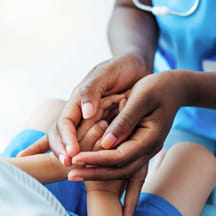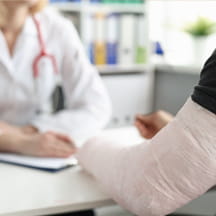Health care and education are integral to healthy outcomes for children and adolescents. Research shows that healthy students do better in school, and academic success bears a lifetime of health benefits.
“We know education is a strong indicator of life longevity and good outcomes, so it's essential for us to be at the table with schools,” says Julia DeAngelo, program manager of school strategies at Children’s National Hospital in Washington, D.C, and co-lead of the School-Friendly Health Systems collaborative. “There are so many opportunities and touch points for children’s hospitals to work with schools and foster the clinical and social outcomes for children and families.”
Given the depth and breadth of their resources, community partnerships, and connection with children and families, children’s hospitals are uniquely positioned to help children achieve better health and academic outcomes. Here are 10 ways hospitals are enhancing school partnerships.
1. Expanding interventions for behavioral health
Cohen Children’s Medical Center developed a behavioral health care model centered on schools, with one behavioral health center serving as a hub for multiple districts. Staffed by board-certified child and adolescent psychiatrists, licensed mental health counselors, and care coordinators, the centers provide psychiatric assessments and short-term crisis care to any student referred to them.
2. Addressing absenteeism
Children’s National teamed up with District of Columbia Public Schools and other local partners to develop an initiative now known as the Collaborative for Attendance Resources in Education and Health (CARE-H). The novel program launched in 2019 to address chronic absenteeism by securely sharing school attendance data with health care providers.
3. Empowering education at home
The Supporting Partnerships to Assure Ready Kids (SPARK) program by Nationwide Children's helps children in under-resourced communities prepare for kindergarten by empowering parents to take a more active role in their child's preschool education. Each month, a SPARK teacher visits the child's home with materials to teach math, reading, and writing. The visits include training for parents on how to use the tools and foster their child's learning.
4. Making EMR data accessible
Children’s Hospital of Orange County began offering school nurses read-only access to its electronic medical record (EMR) to school nurses in 2019. Access to EMRs can dramatically enhance outcomes: one study found a 34% decrease in emergency department visits and a 44% drop in hospitalizations after nurses were given access to a hospital-based EMR.
5. Increasing access to early education
A program offered by Le Bonheur Children’s Hospital in Memphis helps children with medical needs or developmental delays access early childhood education. Le Bonheur Children’s Inclusion Support service trains, guides, and assists early childhood educators so infants, toddlers, and preschoolers with specialized medical needs or developmental disabilities can access and maintain safe care.
6. Creating healthy school environments
Children’s Mercy’s environmental health team collaborated with a local school district to develop a program to address potential environmental concerns before they become health hazards. Over the years, the program has evolved to address three primary areas: room environments, education and training, and policy and planning.
7. Increasing access with telehealth
Atrium Health Levine Children’s Meaningful Medicine school program is a win for everyone involved. With telemedicine and teletherapy, kids are seen for health conditions without leaving school, parents avoid missing work, and providers enjoy convenient hours and higher job satisfaction. Most importantly, kids get treatment sooner for medical and behavioral health, avoiding emergent conditions.
8. Leveraging hyper-local school data
A collaboration between St. Luke’s Children’s Hospital and Boise State University, tackles mental health issues at their source through community engagement and surveys, receiving data directly from about 10,000 high school students. This hyper-local approach ensures they understand the particular needs of their community, rather than relying on national estimates.
9. Embedding clinicians for optimal care
Akron Children’s school-based health centers use a hub and spoke model, with nine centers staffed by nurse practitioners who visit schools or assist school nurses through telehealth services. The program provides health care services to treat the day-to-day ailments typically handled by a school nurse and allows for students to schedule well-care visits and appointments to manage chronic conditions, such as asthma.
10. Training school nurses
A mentor program by Children’s Nebraska provides school nurses who have less than two years of experience with the support and guidance needed to succeed in their roles. Children’s pairs mentor nurses who have more than five years of experience working in schools with mentees based on proximity and similarities among their school districts.



